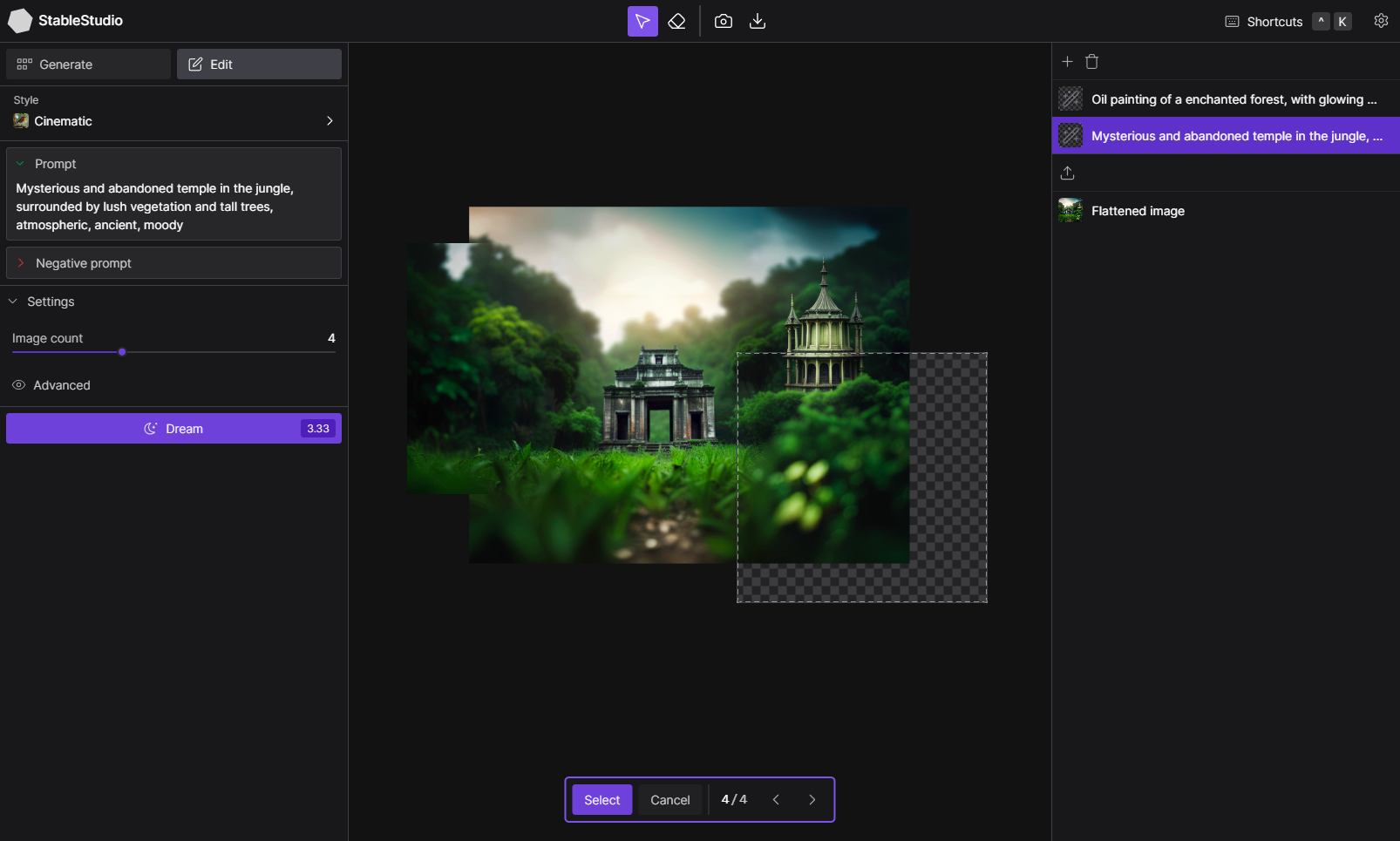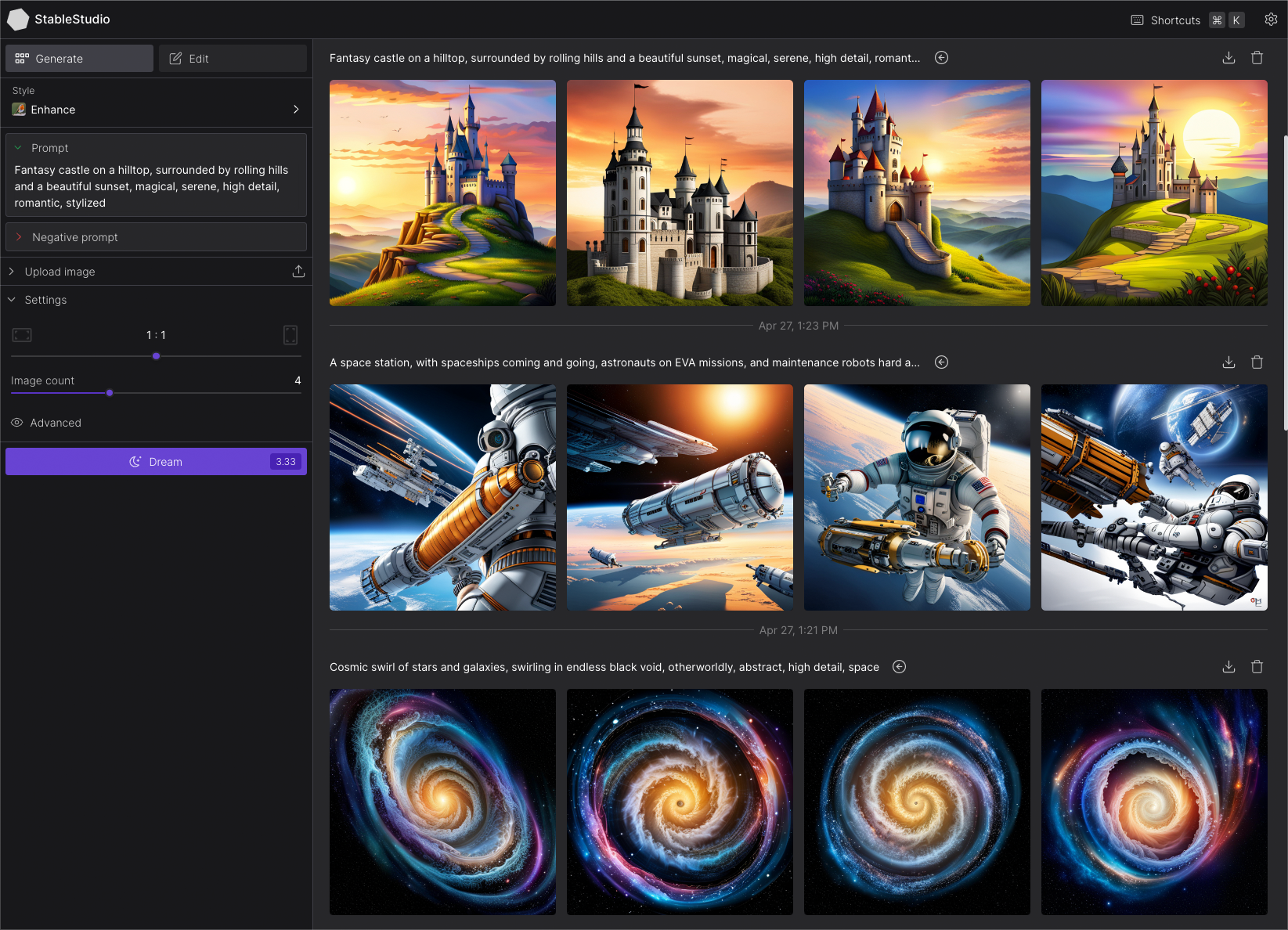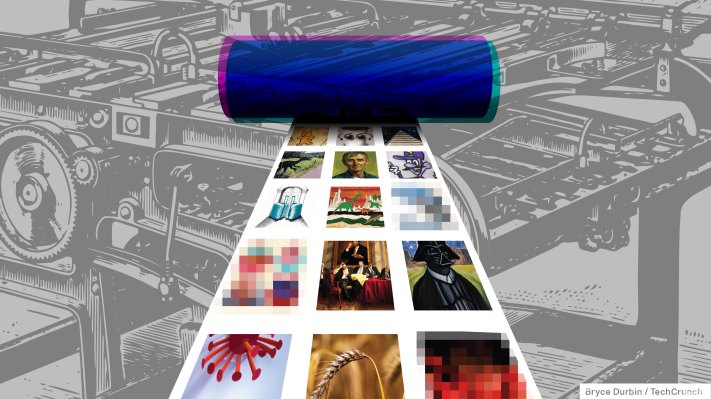Stability AI, the AI startup behind the text-to-image model Stable Diffusion, this week announced the release of StableStudio, an open source version of DreamStudio, Stability AI’s commercial AI-powered design suite.
In a blog post, Stability AI writes that it hopes to “foster a project [that] can outpace anything developed by a single company,” alluding to recent investments in the generative AI space from tech giants like Microsoft, Google and Amazon.
“We believe the best way to expand upon that impressive reach is through open, community-driven development rather than a private iteration of a closed-source product,” Stability AI said. “Our goal is to work with the broader community to create a world-class user interface for generative AI [that] users fully control.”
DreamStudio was first imagined as an animation studio for the open source generative AI art model Disco Diffusion. Focus shifted last year toward image generation with the arrival of Stable Diffusion, which brought DreamStudio more in line with rival generative image platforms like Midjourney and NightCafe.

Stability AI’s new open source generative design studio. Image Credits: Stability AI
The differences between StableStudio and DreamStudio are relatively minor. StableStudio doesn’t have DreamStudio branding or Stability-specific account features, like billing and API management, and API calls on the back end have been replaced by a plug-in system.
Stability AI stressed that, going forward, DreamStudio will become its preferred, managed instance of StableStudio and stay up to date with StableStudio “whenever possible.”
“The release of StableStudio reiterates Stability AI’s commitment to open-source and transparency,” the company continued. “We’re eager to see what the community will create.”
The announcement strikes a giving tone, but a cynic might argue StableStudio is an attempt to outsource DreamStudio’s development to the open source community. That’s not an unfair assumption. After all, Stability AI is under pressure to monetize its sprawling efforts, which run the gamut from art and animation to biomed and generative audio.
Stability AI CEO Emad Mostaque has hinted at plans to IPO, but Semafor recently reported that Stability AI — which raised over $100 million in venture capital last October at a reported valuation of more than $1 billion — “is burning through cash and has been slow to generate revenue.”

Image Credits: Stability AI
It’s an existential problem for Stability AI. They company didn’t create Stable Diffusion, instead opting to partner with research organizations to create and build products on top of the model. Stability AI’s MO, for the most part, is supplying cloud access to the processing power needed to train AI models rather than developing its own.
But that’s started to change. Several weeks ago, Stability AI released a suite of text-generating AI models intended to go head to head with systems like OpenAI’s GPT-4 and ChatGPT. And in early April, Stability released a new version of Stable Diffusion called Stable Diffusion XL, or SDXL, that improves upon the original in key ways — like generating hands.
The renewed push for original research with Stability AI is coinciding, not coincidentally, with the startup’s efforts to raise additional cash. According to Semafor, Stability is reportedly seeking a funding tranche that would value it at $4 billion.
